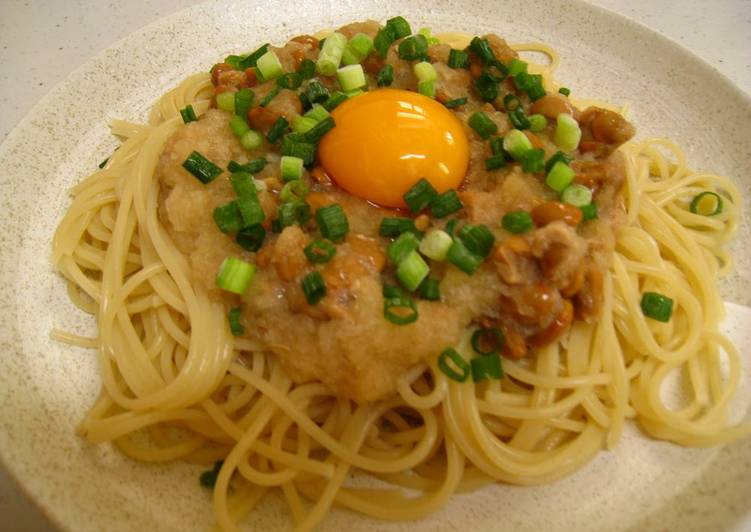Easiest Way to Prepare Yummy Natto and Grated Daikon Radish Pasta

Easiest Way to Prepare Yummy Natto and Grated Daikon Radish Pasta Delicious, fresh and tasty.
Natto and Grated Daikon Radish Pasta. Daikon oroshi means grated daikon radish in Japanese. This traditional, white snow-like condiment enhances dishes, like fish, udon, and soba noodles, and also has beneficial health effects. Learn how to eat daikon oroshi, where you can eat it in Japan, and how to make it.
Plate and serve with some additional grated bottarga on top.
Pressing a paper towel against the brine's surface ensures that the radish is fully submerged, for more effective pickling.
Bring to a boil over medium-high heat, stirring to ensure that sugar fully dissolves.
You can have Natto and Grated Daikon Radish Pasta using 6 ingredients and 3 steps. Here is how you cook it.
Ingredients of Natto and Grated Daikon Radish Pasta
-
It’s 1 of serving Pasta.
-
It’s 3 of to 4 cm Daikon radish.
-
It’s 1 of to 2 packs Natto.
-
Prepare 1 of Soy sauce.
-
It’s 1 of Raw egg yolk.
-
It’s 1 of Chopped green onion.
Remove from heat and add daikon.
Press a paper towel directly against the surface of the brine and.
This Daikon Radish Salad is dressed simply in a garlic vinaigrette and sprinkled with Korean red pepper powder for a bit of heat.
I hit up the Korean market in our town because I'm cooking up a batch of homemade kimchi - An experiment that I hope goes well - It needs to ferment for about a month.
Natto and Grated Daikon Radish Pasta step by step
-
Cook the pasta..
-
Grate the daikon radish, and mix in the natto and the sauce that comes with it. Taste, and add soy sauce..
-
Put the natto and grated radish on top of the pasta. Add the raw egg yolk and chopped green onion, and its done!.
Furofuki Daikon is a simple yet delicious way to enjoy the Japanese Daikon Radish.
There are many variations, but this is the basic recipe for this rustic.
Braised Japanese daikon radish, known simply in Japanese as "daikon no nimono" is a very common dish that is served in the winter when daikon is typically in the season.
Slowly simmering the daikon brings out its natural sweetness and highlights the mellowness of this root.
The preservation process for daikon radishes involves salting them and drying them in the sun.

